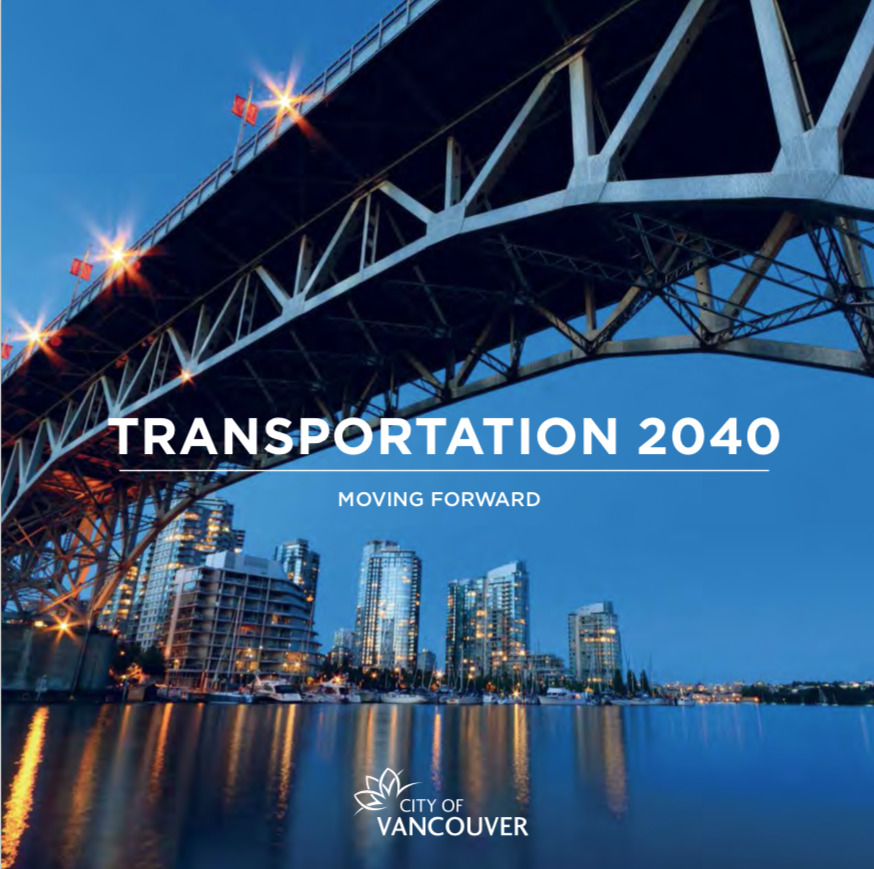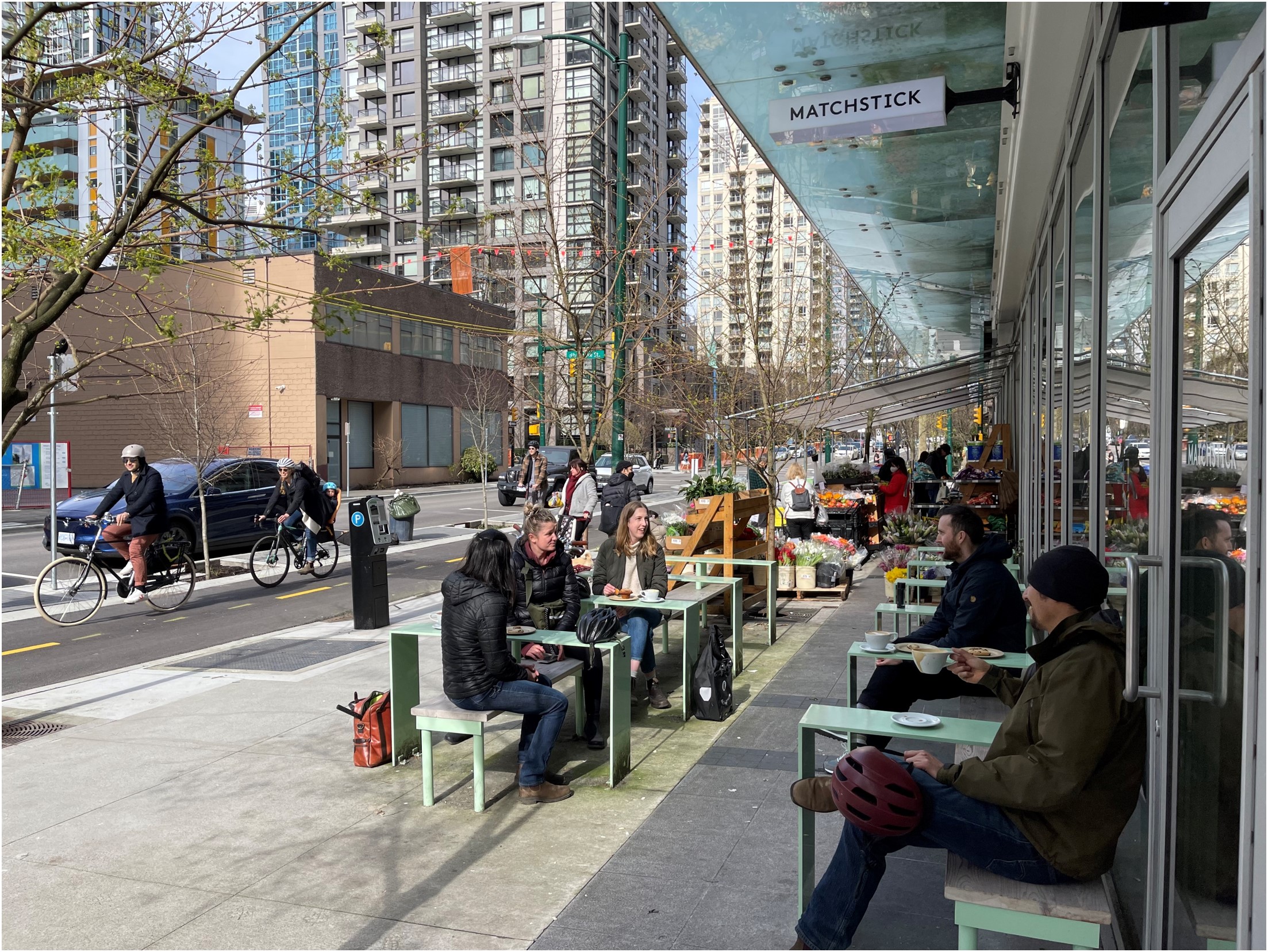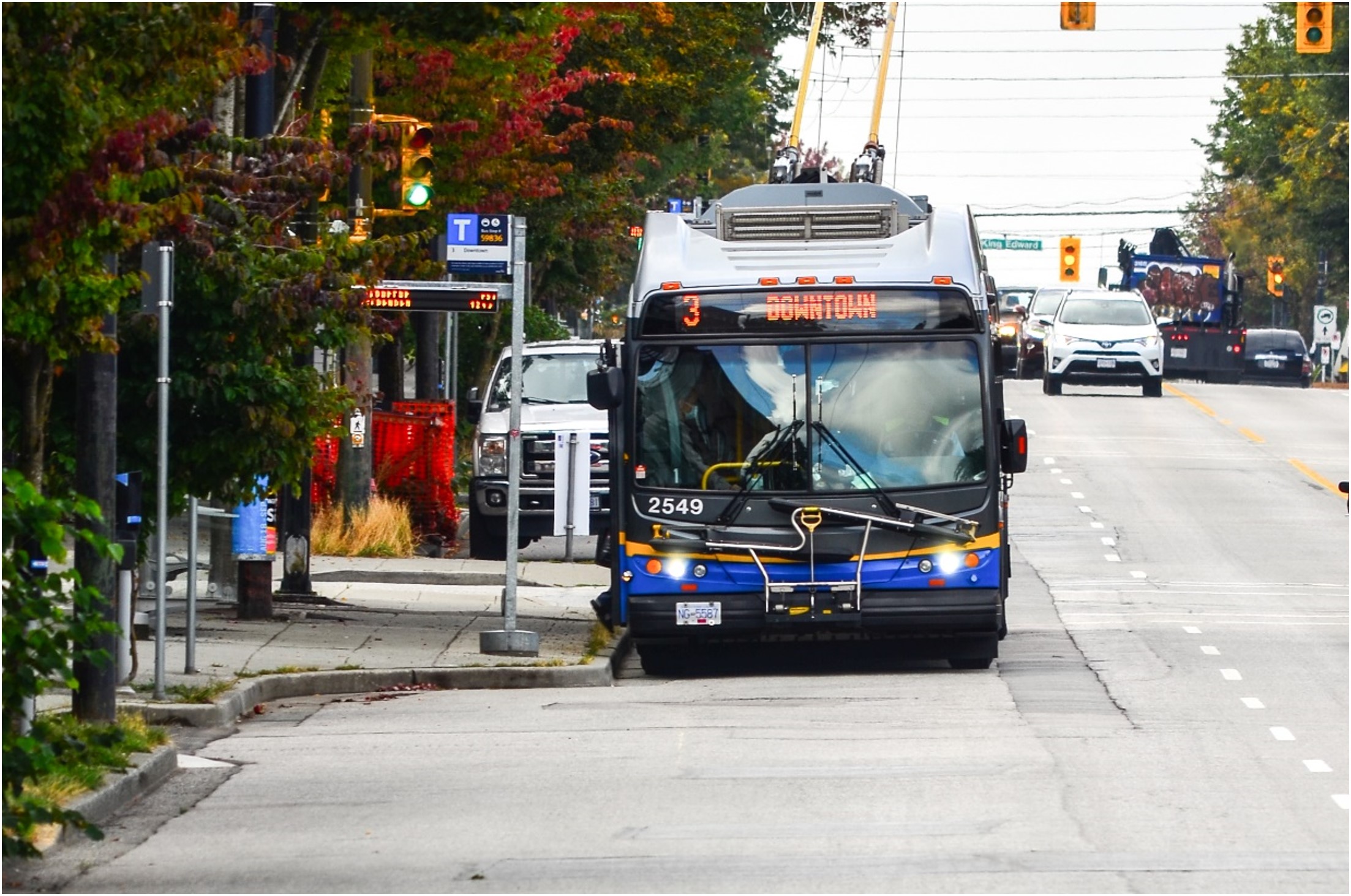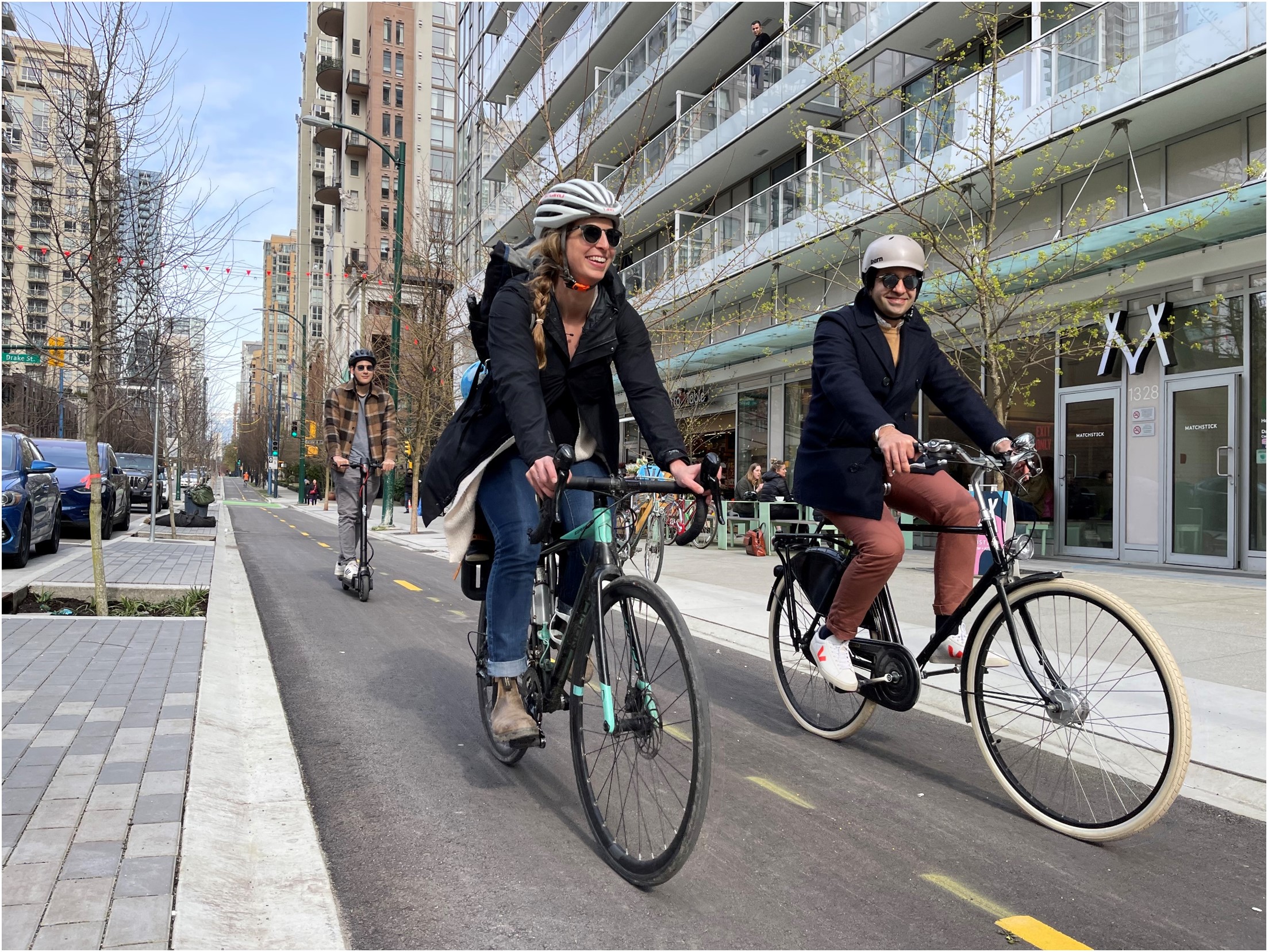Loading component...
Get up to speed on the mobility industry - our newsletter straight to your inbox!
Get up to speed on the mobility industry - our newsletter straight to your inbox!
In 2012 the City of Vancouver, the Canadian Province of British Columbia’s largest conurbation, published a thoroughly comprehensive, future-gazing 88-page document entitled Transportation 2040: Moving Forward. At the time it was widely considered to be one of the, if not the, most ambitious, well-rounded transportation plans ever published.
So, 14 years later, at the nominal halfway point between its publication and its titular target date, how many of its goals are on track to be achieved? If we take one such goal, Modal Share, it gives a compelling indication of where Vancouver is headed.
“By 2040, at least two-thirds of all trips will be made by foot, bike, and transit. The total number of trips by sustainable modes will grow significantly, while motor vehicle volumes will slightly decline.
Mode share… is one of the most common ways of measuring travel behaviour and setting long-term targets, and it provides a good understanding of how people get around. The mode share targets in this plan are a measure of all person trips beginning in the city, for any purpose.”
Transportation 2040 affirmed the city’s Greenest City 2020 Action Plan, among the targets of which were to make at least half of all trips by foot, bike, and transit by 2020, before achieving the aforementioned 2040 target to make at least two-thirds of all trips by these modes. That second target has now been reset to 2030, just five years and nine months away. (Among other goals set in 2012 were to eliminate dependence on fossil fuels and breathe the cleanest air of any major city in the world).
Intertraffic spoke to Tim Barton, the City of Vancouver’s Acting Manager of Transportation Planning, about the city’s Modal Share targets and how they will be achieved.
Intertraffic: Transportation 2040: Moving Forward was rightly lauded in 2012 as one of the best-written transportation plans of modern times. It wasn’t ridiculously ambitious – it seemed, at the time, to be very forward thinking, yet realistic.
Tim Barton (TB): We wanted it to be realistic and we want to get there. It was indeed written in 2012, though, and a couple of years ago the City’s Climate Emergency Action Plan moved the target forward by a full decade. In Transportation 2040 we said we'd get to a two-thirds active mode split by 2040 and we're now saying we're trying to do it by 2030, which really isn't very far away at all.

We produce interim reports, called Transportation Snapshots, and the 2022 issue, which is the latest available, shows that in modal share terms we’re at just over 50% at the moment. It’s fair to say that the numbers have plateaued a little bit. We’ve created a solid network of active transportation lanes in the core of the city, where land uses and density help support more active modes like walking and cycling. In essence that was the low hanging fruit.
In Transportation 2040 we said we'd get to a two-thirds active mode split by 2040 and we're now saying we're trying to do it by 2030
Intertraffic: How do you take that next step and achieve your 65% target within six years? Do you continue to do what you've been doing, which has clearly worked, or do you add extra elements to your efforts, as they did in cities such as Glasgow who made permanent a number of temporary Covid-driven transport measures, such as additional cycle lanes?
TB: One thing we found is that the use of our recreational routes went up during the pandemic, particularly on the Seawall [the world’s longest uninterrupted waterfront path at 28km] that goes around the end of False Creek. People were trying to get out to those kinds of areas for their daily exercise during the height of Covid. Some commuter routes, where usage was significantly down in the pandemic, haven’t bounced back to pre-pandemic levels. The other thing that we did do during the pandemic was to implement a scheme called Slow Streets.
These are streets where we were trying to make more space for people to be able to walk and cycle and be outside. Originally it was a temporary measure but we doubled down on them and haven't taken them out as planned. These are local streets that can be driven on but only if you need to get access to that particular street. It’s hard to measure the exact impact on modal share but these were meant to be temporary measures to allow people to spend time outside during Covid times.

Intertraffic: Antwerp were among some Belgian cities to implement the Garden Streets project, which sounds like something similar to your Slow Streets idea, a few years ago, under the banner of “social cohesion”.
TB: I wouldn't want to overplay what we did as it’s a relatively light touch. In the context of Canada, everyone was loving Montreal last summer, when they closed a number of their commercial streets for walking and cycling, but also programmed the streets with art installations for example. We are planning to do something similar this summer in the Gastown area, close to where the cruise ships come in. We’ll have a pilot closure during July and August this year.
In the longer term, we're talking about how more pedestrian-focused streets help contribute towards mode shift in the long term? It’s possible that it could kickstart a cultural shift, where people are wanting more of those spaces. We’re already planning to do another one on a major street downtown called Granville Street – there’s a general desire to increase the public space and open it up to cycling and walking.
We are planning to do something similar to Montreal this summer in the Gastown area, close to where the cruise ships come in. We’ll have a pilot closure during July and August this year.
Intertraffic: Can we talk about micromobility? In Vancouver is there provision for e-scooters and the like? Some cities, Paris as a high profile example, are banning them, while some, like Antwerp again, are still looking to encourage regulated micromobility schemes. If you've got more cycle lanes, you're encouraging people to use their own personal modes of transport, so does that fit in with meeting Vancouver’s modal share target?
TB: Good timing on the question, as we are planning to launch a shared e-scooter pilot in June. The announcement should be made shortly in terms of which provider that we've chosen. The plan is that the scheme will have launched by early summer. The province of British Columbia has enabled certain cities to pilot micromobility devices because they're technically not allowed on the streets. They’ve allowed us and some other cities that applied for it to test them out.
At the moment e-scooters aren't allowed on our Seawall, but anyone who has been there will know that a lot of people ride on them! We have just gone through the process of changing our bylaws so that we can allow them on the Seawall, as well as any street with a speed limit of 50kph or less. We are not encouraging people to ride e-scooters on our main arterials. But someone’s final destination may be on an arterial and we don’t want people riding on the sidewalk.
At the moment e-scooters aren't allowed on our Seawall, but anyone who has been there will know that a lot of people ride on them! We have just gone through the process of changing our bylaws so that we can allow them
Intertraffic: What goals and targets have you got left? 2030 is only as far into the future as 2018 is in the past. What can you feasibly achieve in that short space of time?
TB: That's a really good question. We could have an entirely separate discussion about what’s realistic at this point. It was only a few years ago that we published the Climate Emergency Action Plan but already that seems like a more optimistic time in some ways. Having said that, it’s really hard to predict the modal change that will come from a new network of active mobility routes, let alone a single bike lane.
We’ve done this much in the last decade, and we made great strides with our bike mode split, so if we make a similar investment in the next decade, and we build a similar number of kilometres, can we assume that we can then do that again? Well, actually, what we need to do is double the amount of kilometres, so doing the same as we've done the last decade is not going to be good enough. We need twice as much in order for cycling to do it’s bit by 2030, but cities only have a finite amount of money.
We’ve done this much in the last decade, and we made great strides with our bike mode split, so if we make a similar investment in the next decade, and we build a similar number of kilometres, can we assume that we can then do that again? No.
Intertraffic: What do you think the city of Vancouver has learned from first identifying and subsequently attempting to achieve these transportation goals?
TB: We’ve talked about ‘carrots’ but we haven't talked about ‘sticks’. Sticks are a lot harder to discuss, for lots of reasons. In the Climate Emergency Action Plan we did talk about further investigating what we were calling transport pricing, similar to the London Congestion Charge, and we also talked about a city-wide parking plan based on CO2 emissions. Our Council decided not to proceed with either of these.
What we were asking people do was not get in their car, but to get on a bus, take the train, cycle, walk – getting people to change their behaviour is very difficult as no-one likes being told what to do. It's OK to offer those carrots, such as additional bike lanes, although we’re really talking about road space reallocation and the removal of street parking, but as soon as you get more into the sticks, like suddenly cranking up parking fees, or talking about bringing in a congestion charge or something like that, it becomes a lot more tricky.

Intertraffic: Do you think that the plans that you've got in place could be used by other cities as a blueprint of how to do this? Or is this Vancouver-specific?
TB: As for Transportation 2040 being applicable to other cities, I think that it would sound quite arrogant to assume that everything within it is specific to Vancouver. Clearly some of it is specific to Vancouver, but I think that pretty much any city could do it like we’ve done it. This is a grid city, so from a high level theoretical perspective there are lots of different streets you can take to get to where you want to go, so there should be enough space for people to walk, cycle, take the bus or drive within this grid. Reality is more complicated of course but I do look at cities in the UK with their radial geography and only a handful of single-lane roads going into the middle of the town with buildings hundreds of years old on either side. That’s a real challenge.

I think it would sound quite arrogant to assume that everything within Transportation 2040 is specific to Vancouver. Clearly some of it is but I think that pretty much any city could do it like we’ve done it
Intertraffic: Finally Tim, would you say that the future of smart transportation comes down to the intelligent use of existing transportation systems as much as it does to the use of intelligent transportation systems?
TB: That’s a really good point, actually. People do get caught up with technology - autonomous vehicles, electric vehicles and all that kind of thing. However, when it comes down to it they are still vehicles on the road, and they still take up the same amount of space as an ICE-powered vehicle. Vancouver is growing, but we don't want to start widening our streets. It's about geometry. We’re trying to move more people in the same amount of space. Single-occupant cars, or even cars with two people in them, are an inefficient way of getting people around compared to public transit and, of course, active modes such as walking and cycling. There’s a geometric imperative to doing this as well.